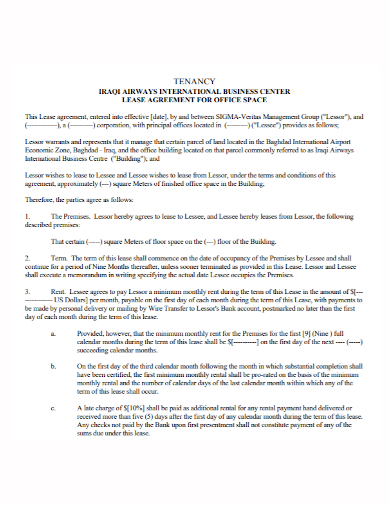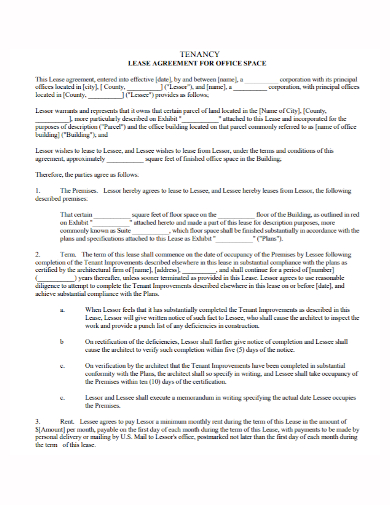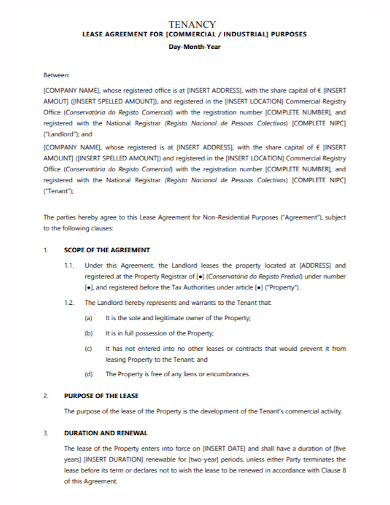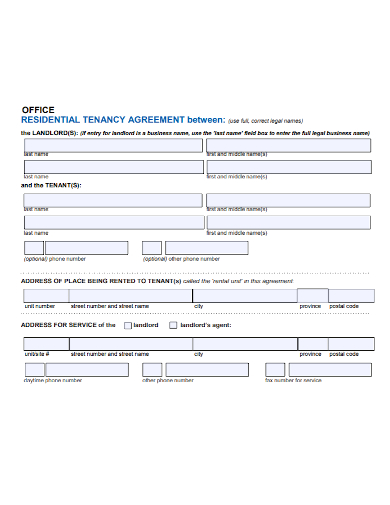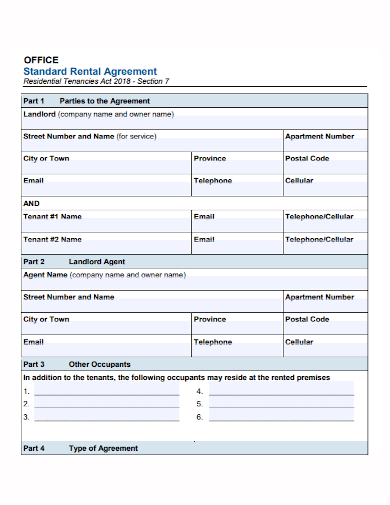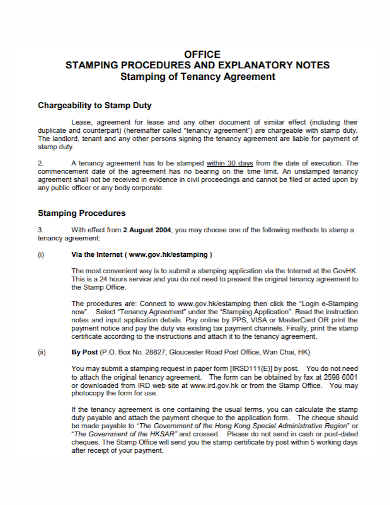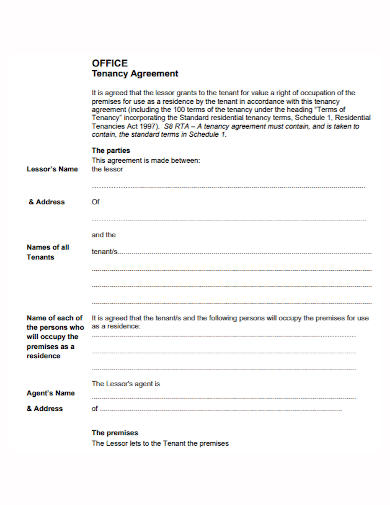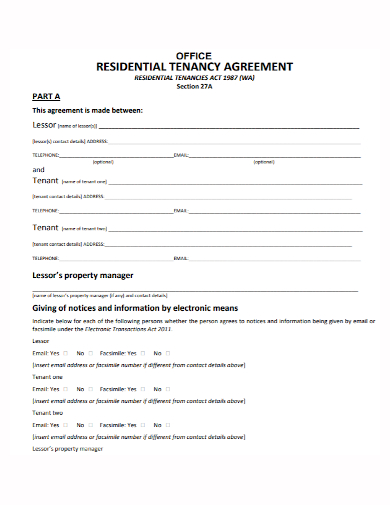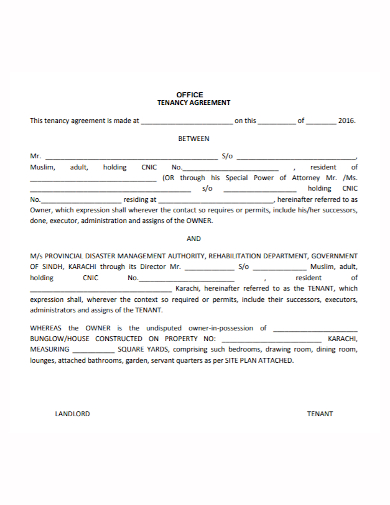So you’re looking for an office space where you can conduct your professional services to clients and customers. This process can be challenging especially if you have lots of obstacles to finding the perfect office space; whether the location isn’t accessible, you have a limited budget, or there aren’t a lot of available office spaces. Plus you need to determine the amount of space you need. And even if you found the perfect office space, negotiating with the landlord can take a long time before you reach an agreement and put it into writing. If you need to know how to rent an office space and how an office tenancy agreement is made, this article will guide you on how to make one!
10+ Office Tenancy Agreement Samples
1. Office Tenancy Agreement Template
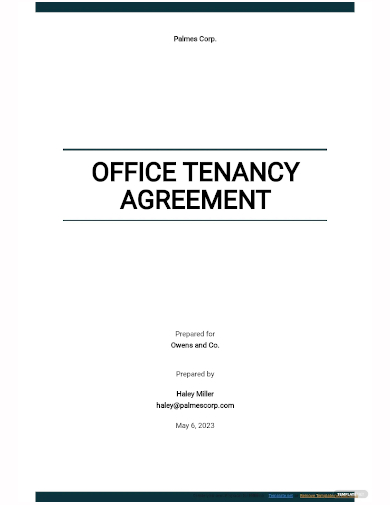
2. Office Space Tenancy Agreement
3. Office Tenancy Lease Agreement
4. Commercial Office Tenancy Agreement
5. Residential Office Tenancy Agreement
6. Office Tenancy Rental Agreement
7. Office Stamping Tenancy Agreement
8. Sample Office Tenancy Agreement
9. Residential Office Property Tenancy Agreement
10. Company Office Tenancy Agreement
11. Office Landlord Tenancy Agreement
What is an Office Tenancy Agreement?
An office tenancy agreement is a legal written document made between a commercial landlord and tenant that will be occupying the landlord’s space for office-related purposes. This type of agreement is usually suited for office occupations such as accountants, attorneys, real estate agents, or other related fields relating to professional consultation.
How to Rent an Office Space?
1. Look For an Office Space
Look for the perfect office space for your business or your work by searching the internet to view available properties. Find websites that are traditional landlord-tenant relationships where the tenant signs a lease with a start and end date.
2. Decide if You Want A Sublease Tenancy
As a tenant, if you’re focused on looking for a monthly setup where the facilities and utilities are fully taken care of by the landlord, a sublease is what you need to look for. This is advantageous for you since you don’t have to worry about utilities on the premises. Decide if you want a monthly lease or a six-month or a full-year lease.
2. Schedule a Property Showing
If you found a few properties in the area where you want your office to be located and it meets your needs; then it’s time to schedule an appointment with the landlord or property manager for you to visit and inspect the property in person. At the showing, the landlord, or the property management, will provide you with necessary details about the property including move-in dates, monthly rent, size of the space, and other details of the property.
3. Negotiate the Terms of the Lease
If you decide which office space works best for you, it’s time to negotiate with the landlord. If you’re caught having two properties you want to lease since there are lots of vacancies in the area, talk with the landlord and ensure you will get the best possible rate.
4. Landlord Verifies the Tenant
Once a verbal agreement is made between both parties (you and the landlord), the landlord will want to verify if you’re who you claim to be. They do this by giving you a rental application fill out, obtaining your financial statements, and other necessary documents.
5. Sign the Office Tenancy Contract
Conclude the tenancy agreement by letting all parties sign the contract and if needed, let a notary authorize the agreement and the parties’ identification.
FAQs
What should be included in a commercial lease agreement?
The provisions that should be included in the contract are the property address, amount of rent, duration of the lease with the start date, costs that both tenant and landlord should be responsible for, and the signature of both parties.
What are the three types of commercial leases?
- The Gross Lease: This type of lease favors the tenant more since the tenant only pays the lease while the landlord is responsible for paying utilities, janitorial services, and maintenance.
- The Net Lease: This type of lease favors the landlord since the tenant not only pays the lease but they also need to pay maintenance fees of all kinds.
- The Modified Gross Lease: This type of lease is a middle ground between favoring the landlord and the tenant. This kind of agreement lets tenants pay their lease amount in one large sum and pay a few segments of fees of the property.
What is commercial landlord responsible for?
The landlord of a commercial property is responsible for maintaining the structural aspects of the property including its foundation, walls, and roof. They are also responsible for maintaining the electrical, heating, and ventilation systems to ensure every tenant is safe and comfortable while occupying their property.
Before you and the landlord sign the agreement, make sure to review it first and check to see if there are any errors or wrong information that was accidentally input. If you have concerns or questions that you would like to raise regarding the agreement and the leasing process, discuss it with your landlord and ensure that you understand the information they’ve given and they are transparent with all the details of the lease. To help you get started agreeing, download our free sample templates above to use as your guide!
Related Posts
FREE 10+ Mentoring Agreement Samples In MS Word | Apple Pages | PDF
FREE 10+ Partner Agreement Samples In MS Word | Google Docs | Apple Pages | PDF
FREE 10+ Individual Agreement Samples In MS Word | Google Docs | Apple Pages | PDF
FREE 10+ Strategic Agreement Samples In MS Word | Google Docs | Apple Pages | PDF
FREE 10+ Equity Agreement Samples In MS Word | Google Docs | Apple Pages | PDF
FREE 10+ Producer Agreement Samples in MS Word | Apple Pages | PDF
FREE 10+ Grant Agreement Samples In MS Word | Apple Pages | PDF
FREE 8+ Meeting Agreement Samples in MS Word | Google Docs | Apple Pages | PDF
FREE 10+ Community Agreement Samples In MS Word | Google Docs | PDF
FREE 8+ Real Estate Option Agreement Samples in MS Word | PDF
FREE 10+ Call Option Agreement Samples In MS Word | PDF
FREE 10+ Advertising Agreement Samples In MS Word | Google Docs | Apple Pages | PDF
FREE 10+ Car Agreement Samples In MS Word | Google Docs | Apple Pages | PDF
FREE 10+ Horse Agreement Samples In MS Word | Apple Pages | PDF
FREE 10+ Option Agreement Samples In MS Word | Google Docs | Apple Pages | PDF

